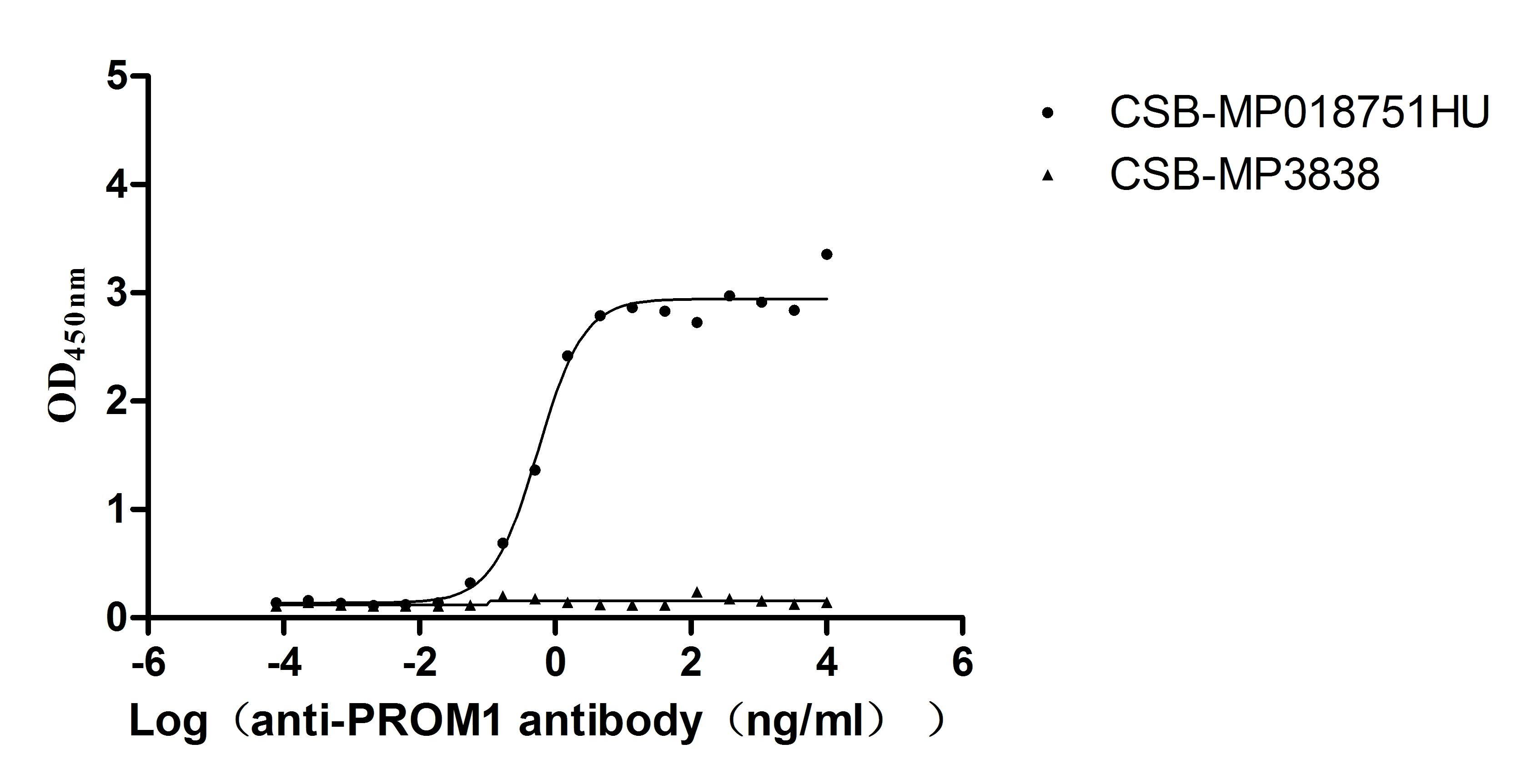The PROM1 monoclonal antibody was generated using the recombinant human PROM1 protein as the immunogen. To obtain the DNA sequence of the PROM1 monoclonal antibody, the cDNA was sequenced and the gene was cloned into a plasmid vector. This vector was then transfected into a host cell using an appropriate transfection method. The PROM1 recombinant monoclonal antibody was purified using affinity chromatography and its specificity was tested using ELISA. It demonstrated high binding affinity to the recombinant human PROM1 protein (CSB-MP018751HU(A4)) with an EC50 range of 0.4322-0.7189 ng/mL. It can react with human PROM1 protein.
PROM1, also known as CD133, is a glycoprotein that is found on the surface of various cell types, including hematopoietic stem cells, neural stem cells, and cancer stem cells. Its main function is associated with the maintenance of stemness in these cells. PROM1 has been shown to play a role in the formation and maintenance of membrane protrusions, including microvilli and cilia. It has also been implicated in various cellular processes, such as cell proliferation, cell differentiation, and cell migration. Additionally, PROM1 has been associated with a number of diseases, including cancer and retinal degeneration, and is considered a potential marker for cancer stem cells.






